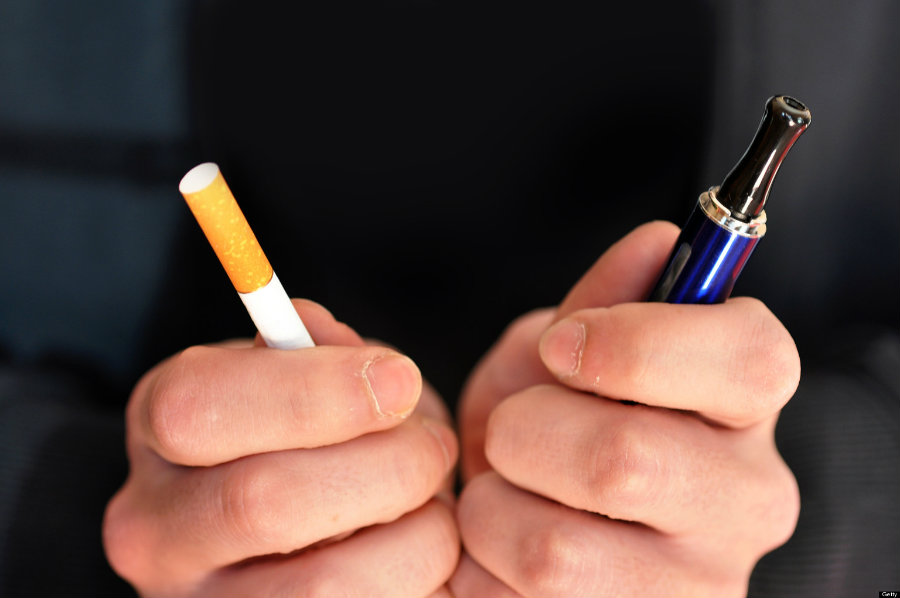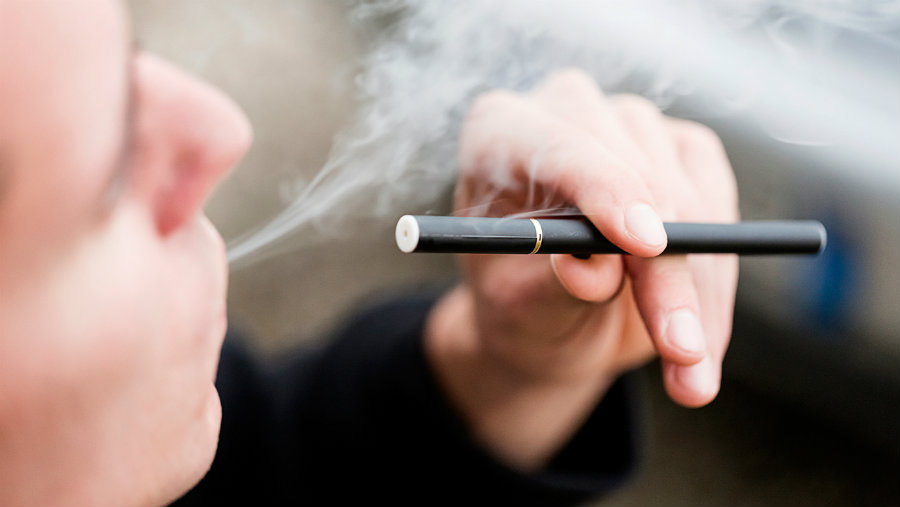Vaping or smoking e-cigarettes containing nicotine-based liquid can be as harmful as tobacco cigarettes according to a new study.
Nevertheless, another study shows that people who smoke e-cigarettes are less dependent on the product. While e-cigarettes are a safer alternative, it seems that smoking them is in no way as healthy as remaining smoke-free.

Potentially as harmful, but always safer than tobacco
Researchers at the University of Connecticut performed the first study. They wanted to see if they could damage cellular DNA by using e-cigarette liquids with and without nicotine.
They introduced liquid samples to a specialized tool that would allow them to interact with human enzymes and DNA,. Then, they assessed the DNA damage with a camera and they measured the results against the effects of conventional tobacco cigarettes. The more damaged the DNA was, the higher the risk for cancerous cells to form.

“From the results of our study, we can conclude that e-cigarettes have as much potential to cause DNA damage as unfiltered regular cigarettes,” stated Karteek Kadimisetty, lead author of the study.
It was also determined that 20 puffs of an e-cigarette equal to one standard unfiltered cigarette. It also appears that non-nicotine vaping liquid has a lot of chemical additives deemed as carcinogens.
Former U.S. Surgeon General Vivek Murthy released a report last December speaking about his concerns on the rising popularity of e-cigarettes, as they appear to be more attractive to high school students compared to tobacco cigarettes.
He stated that at the time of the report, e-cigarettes were the most common tobacco-based product used by young Americans, an achievement that was nowhere near to be accomplished in 2010 when someone smoking an e-cigarette was an odd sight.
Several studies have weighed upon the potential drawbacks of e-cigarettes, which claim to be a safer alternative to tobacco cigarettes. A Harvard study published in 2015 suggests that e-cigarette users are less likely to quit, which adds up to another study published in the U.K. that explained how e-cigarette smokers are 28 percent less likely to give up their habit.
Smoking products with nicotine, even if it is occasionally, can have severe consequences upon one’s life other than increasing the risk of having cancer. While no one may doubt that a puff of a tobacco cigarette is more dangerous than one from an e-cigarette, both tend to include a dose of nicotine, glycerin, and flavorings.
Most of those who use e-cigarettes believe that it is safer only because there is neither smoke, tar, or carbon monoxide.
Stopping to smoke products with nicotine causes withdrawal symptoms. In younger people, it may cause damage to memory, attention span, and arteries.
Despite all criticism, researchers agree that on a broader perspective, e-cigarettes are less dangerous than tobacco cigarettes.
“The worst critics of e-cigarettes would probably argue they’re a half to two-thirds less dangerous. But from a practical view, they’re probably on the order of 80% to 85% less dangerous, at least,” states Kenneth Warner, a tobacco policy specialist at the University of Michigan.
Source: ACS Publications

I’m concerned with the methodology used in this research. I’d like to ensure they haven’t simply produced dry burn results (burning of the cotton/wick) and based their results off these conditions instead of real life vaping conditions. Scientists time and time again have completely ignored this issue of dry burning of the coil/wick in most all electronic cigarette research. As a result it often will give the appearance of vaping being inaccurately harmful. I would really to see studies conducted in actual realistic vaping conditions. How do I know this study has done that? There is no information that I have seen on the types of devices that were used to produce the vapor, the brand and Ohm of the coil, the temperature they had the device at, whether the temperature was appropriate for the type of coil, the time interval between drags taken on the e-cig. 10 second drags on an E-cigarette are already well above the average for users, most vape 2-6 second drags. If the researchers assume e-cig drags are equal to traditional tobacco cigs, they will almost certainly produce dry burning of the coil and induce these chemicals the media headlines love to tout around in their anti-vapor stories. Yet I would very much like to ensure this study did indeed take all of these dry burn scenarios into account prior to running the experiment. Because all of these factors attribute to RLC (Real Life Conditions) of vaping. If these aren’t known and accounted for in the respected research study, it is impossible to conclude whether any given study is applicable to the real life risks of vaping. We already know dry burning the coil/cotton produces dangerous chemicals that could cause cancer. Luckily the experience of dry burning is so disgusting and obvious to the user no vaper could/would actually continue to vape this dry burning cotton enough to produce these dangerous effects.